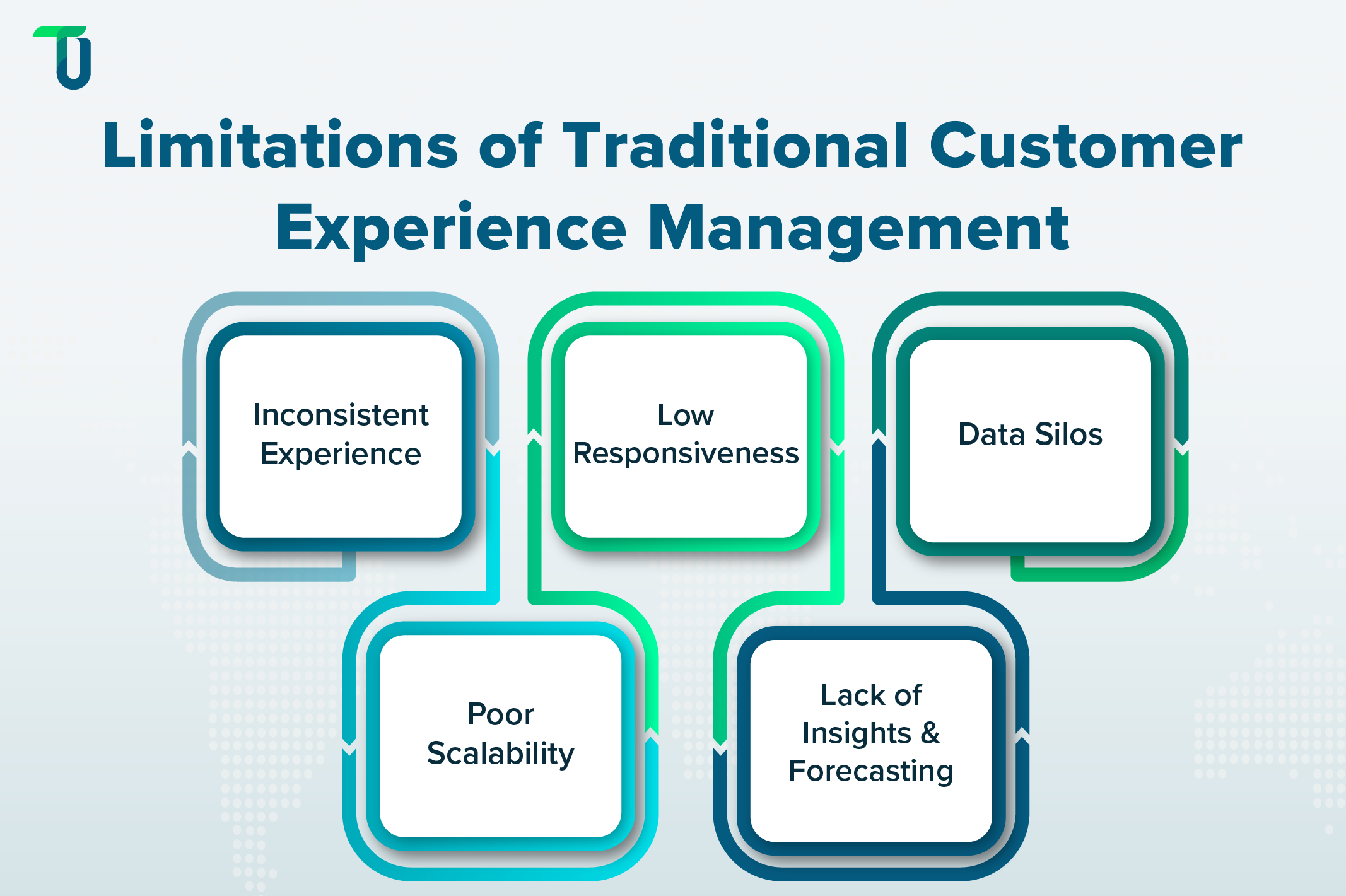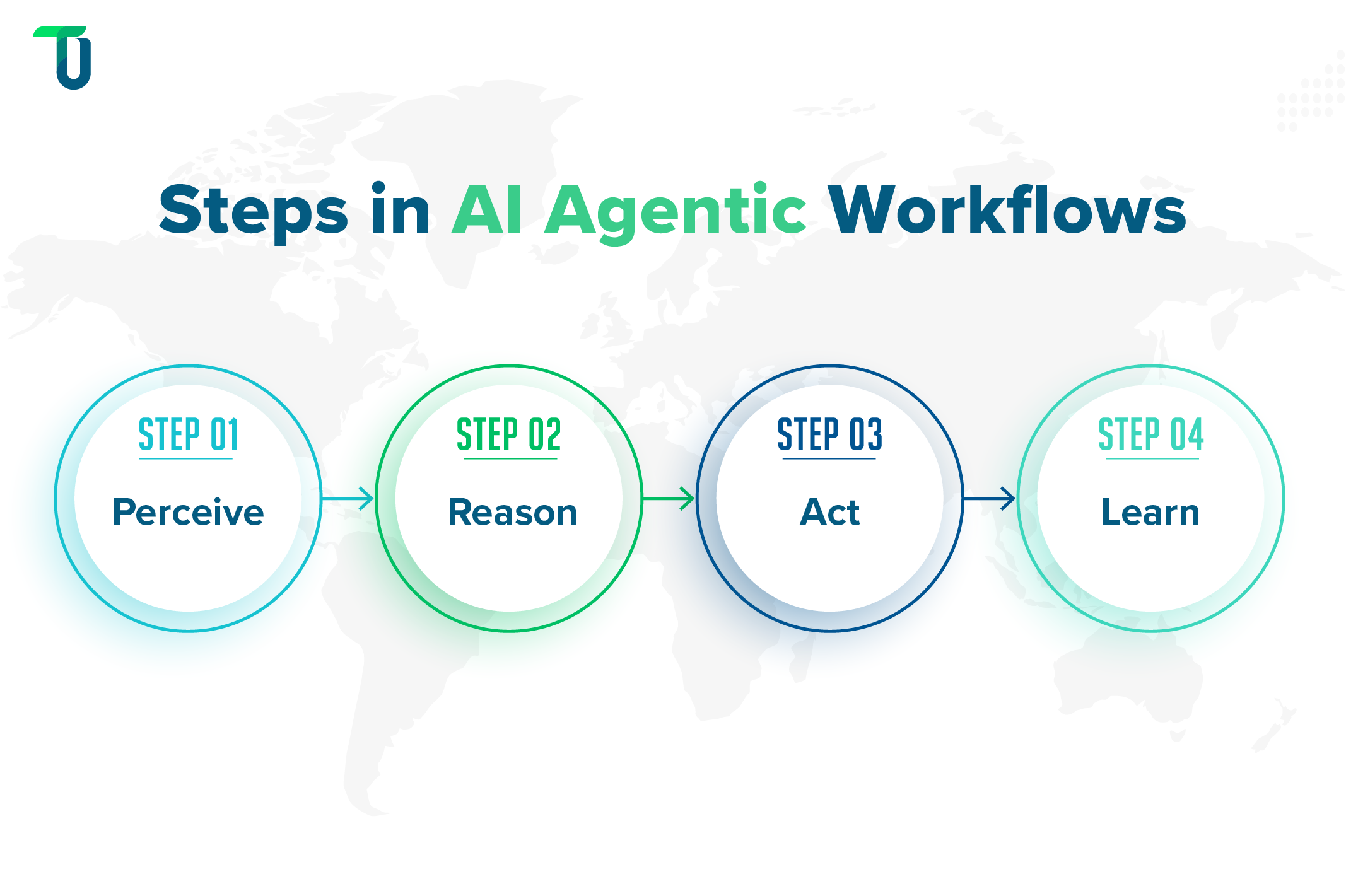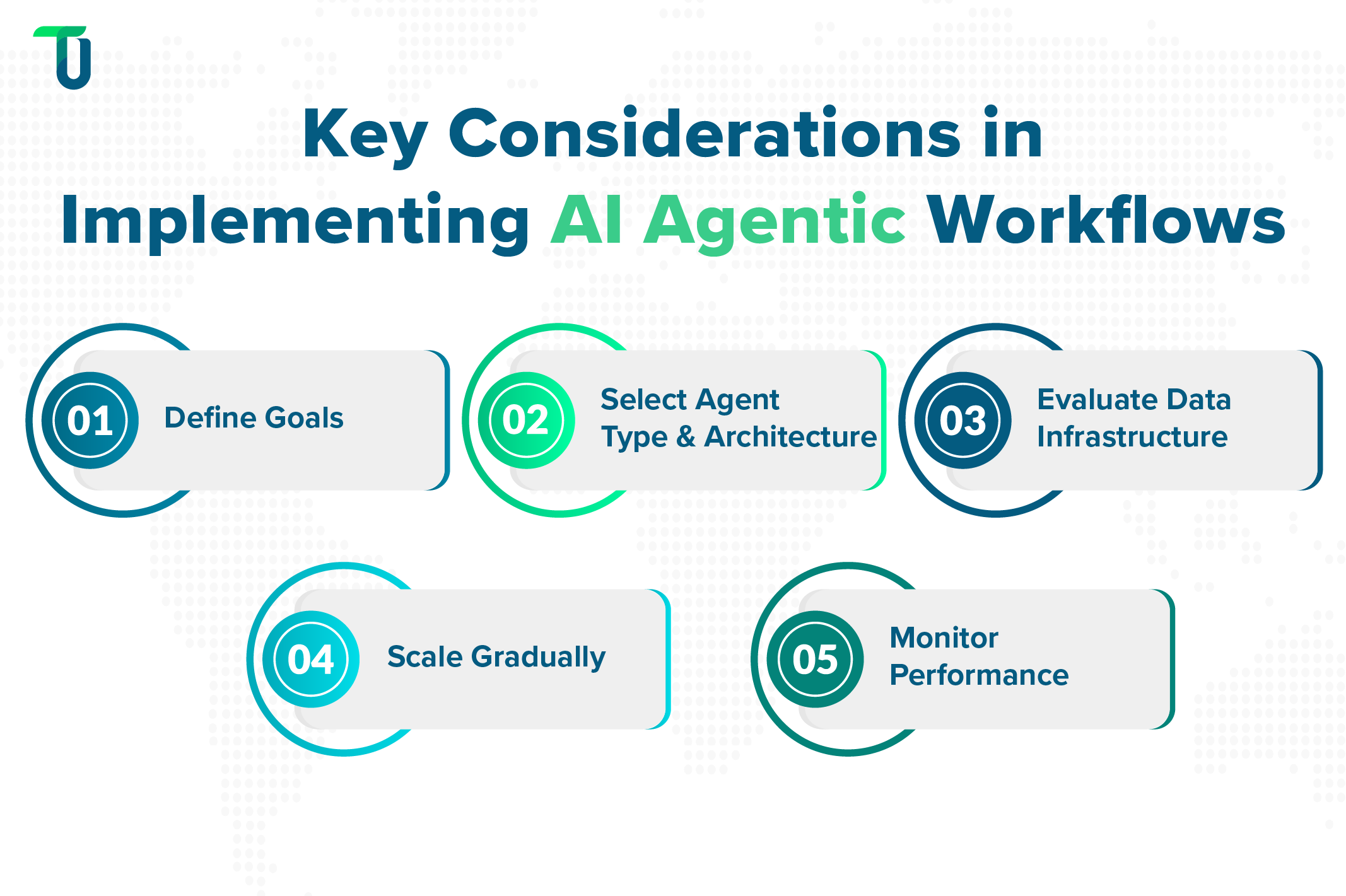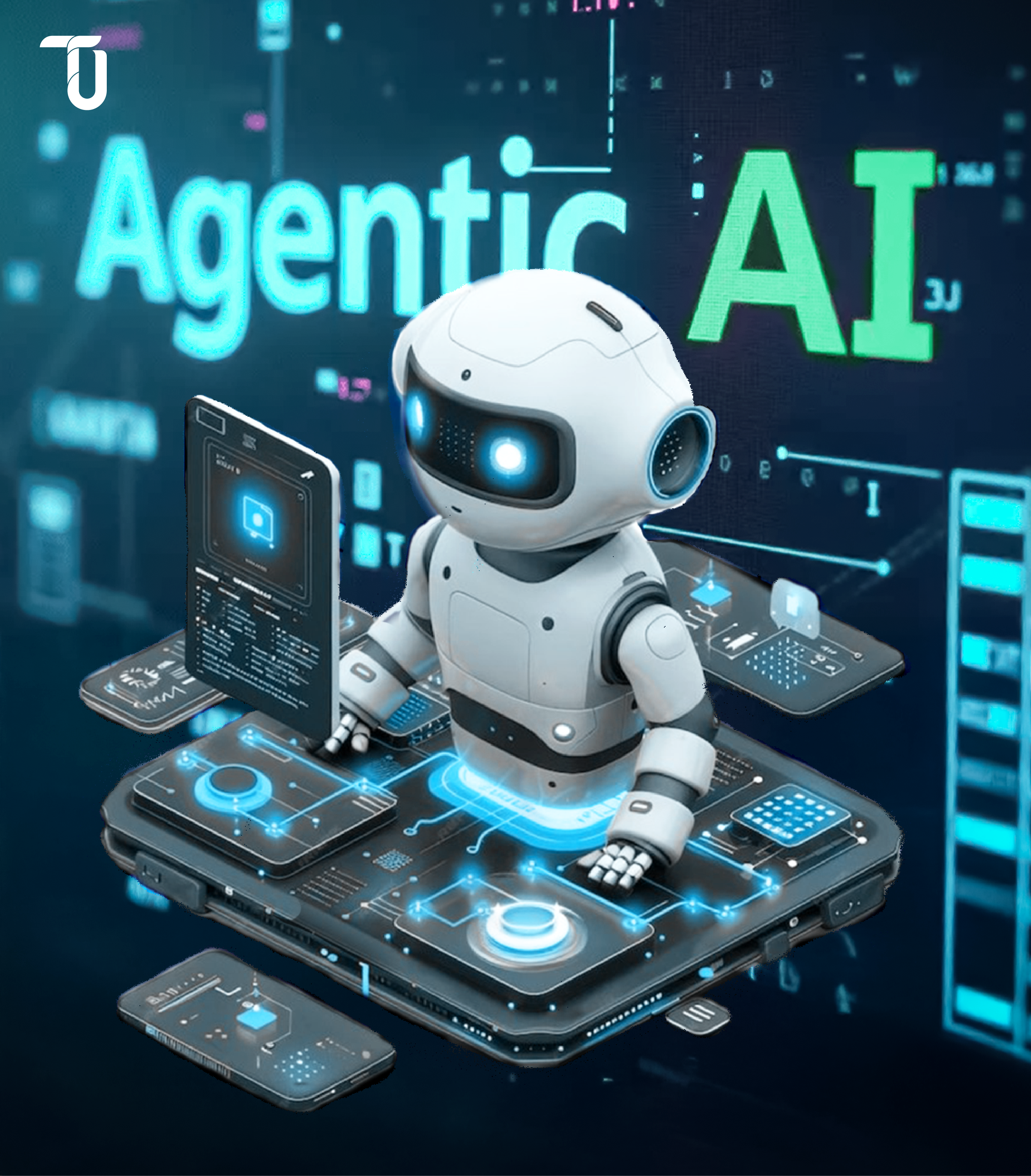What is Agentic AI and How Does It Overcome the Challenges in Traditional Customer Experience Management
Agentic AI is a type of artificial intelligence that is poised to transform customer service across industries. Agentic AI uses new forms of AI such as large language models (LLMs), traditional AI (machine learning), and enterprise automation to create autonomous agents that can evaluate information, set targets and make decisions independently. These agents can solve complex problems and adapt to dynamic conditions, learning incrementally through every interaction.
In recent years, businesses have continued to invest in traditional technology and even AI to improve their customer experience and responsiveness. However, many challenges still remain:

Inconsistent Experience: Traditional models still face issues when delivering truly personalized experiences. Moreover, maintaining a consistent level of service across all customer touchpoints can be challenging.
Agentic AI systems can not only standardize the response across channels but offer a great degree of personalization and provide support to human agents where necessary. By leveraging machine learning algorithms to glean customer behavior insights, Agentic AI can deliver highly specific and tailored recommendations at scale.
Low Responsiveness: A majority of customer support processes are reactive by design, addressing challenges only after they occur. Longer and unpredictable response times are a source of customer dissatisfaction.
Agentic AI, on the other hand, speeds up the response time offering instant help and real-time responses, often anticipating some of the challenges, leading to better management of customer expectations.
Data Silos: Traditional Customer Experience Management (CEM) often depends on information from fragmented sources that are not integrated. This leads to inconsistent customer insights. Data silos are caused due to lack of interoperability and collaboration across systems and functions. The lack of unified data impedes decision-making, increases costs, and impacts overall customer experience and opportunities.
The beauty of Agentic AI is that it can analyze and combine insights from data across platforms, offering a unified view of the customer experience. According to Accenture, organizations using AI for cross-functional collaboration witness a 15-30% reduction in operational expenses.
Poor Scalability: One of the challenges of a model that simply relies on automation is delivering a consistently high level of service at scale. Legacy systems and fragmented stacks create multiple roadblocks for scaling customer experience. Manual workarounds and poor data integration lead to inconsistent interactions, errors, and frustration. As businesses grow, keeping up with the sheer volumes can be challenging.
Agentic AI helps automate responses to common queries, effectively managing high volumes of customer interactions across multiple channels. It can also auto-map data between fragmented systems, dynamically resolve compatibility errors, and enable automated workflows, ultimately reducing IT bottlenecks and improving CX at scale.
Lack of Insights and Forecasting: Conventional customer service methods rely heavily on customer feedback to drive their strategy. Often this process is reactive and not forward-looking. For instance, identifying at-risk customers using data can enable rapid intervention with a targeted retention plan. However, traditional methods simply do not have the necessary insights to accurately predict these trends and behaviors.
Agentic AI analyzes patterns to predict customer behavior and preferences, allowing for proactive interactions leading to customer delight. Moreover, Agentic AI can process and analyze large amounts of unstructured qualitative data from various channels, surveys, and feedback forms, and extract predictive insights from these.
How Agentic AI Works in Customer Experience Management
Agentic AI offers proactive, personalized, and more efficient interactions using features like real-time data analysis, automation of tasks, and incremental learning. Let’s take a deeper dive into how Agentic AI takes customer experience to the next orbit. Agentic AI leverages a 4-step methodology for problem-solving:

Step 1: Perceive
AI agents gather and process data (both structured and unstructured) from multiple sources like sensors, databases, and digital interfaces. The agents gather meaningful features such as images, objects, and other relevant entities in the environment.
Step 2: Reason
A Large Language Model (LLM) is the main reasoning engine that breaks up tasks, creates solutions, and facilitates various specialized models for functions like visual processing, content creation , or recommendations. This phase uses techniques like Retrieval-augmented Generation (RAG) to tap into proprietary data sources and deliver accurate results.
Step 3: Act
Agentic AI can integrate with external tools and software via application programming interfaces (APIs), leading to faster execution of tasks based on the plans it has formed. Provisions can be built into AI agents to ensure they execute the tasks accurately. For instance, a customer service AI agent can process claims up to a certain amount, while claims above that limit would have to be approved by a human, etc.
Step 4: Learn
Perhaps one of the best features of AI agents is their ability to improve through a feedback loop or what is called a data flywheel, where the data generated from interactions is incrementally fed to enhance the models. In that sense, the ability to continuously learn and improve makes AI agents more effective over time, providing businesses with a powerful tool for making better decisions and driving efficiency.
Looking to Enhance Customer Experience with AI?
Find out how Agentic workflows can automate and optimize your customer interactions with real-time insights and decision-making.
Revolutionizing Service Interactions: Trends and Benefits of Agentic AI
According to business research and advisory firm Gartner, Inc. Agentic AI is set to transform the way service interactions are conducted . Their research shows that “By 2029, agentic AI will autonomously resolve 80% of common customer service issues without human intervention, leading to a 30% reduction in operational costs”
CX technology experts have emphasized how both customers and organizations will leverage this technology to automate interactions, reshaping the relationship between service teams and customers.
Unlike previous versions of AI that follow prescribed rules, Agentic AI can plan, adjust and execute tasks based on real-time feedback.
Combining proactive assistance, context awareness(using past interactions to personalize responses), multi-step, task execution, and multi-channel support, Agentic AI completes tasks autonomously and improves over time with adaptation. Thus, AI Agents deliver a smoother, more intuitive customer journey by reducing friction and incorporating real-time feedback.
Key Advantages of Using Agent Architecture in AI
Designing AI software based on agentic architecture has its unique advantages, such as:
Customer Retention Metrics: Businesses using AI-powered systems note remarkable improvements across key customer performance indicators and metrics like customer lifetime value, churn reduction, sentiment analysis , net promoter scores, and average handling times.
Operational Efficiency: AI agents trained on quality data, can tackle complex, decision-intensive tasks that are beyond the reach of bots. This helps employees to shift their focus on strategic initiatives and creative problem-solving.
Improved Human-AI interactions: Instead of replacing human resources, AI agents can improve performance, engagement, and job satisfaction. Integrating with existing systems and processes, agentic AI software forms a powerful nexus with workforces, giving organizations the combined power and intelligence to handle complex challenges and drive efficiency.
Hyper-personalization: Agentic AI can accurately analyze customer sentiment and preferences across multiple channels and touchpoints. It then assesses the usage patterns and context to offer a superior level of personalization and recommendations, increasing customer satisfaction scores.
Implementation Advice for AI Agent Workflows
Businesses across sectors are looking to leverage the power of Agentic AI. Here are some important considerations:

Define Goals: What are the specific CX challenges you are looking to resolve with AI agent workflows? AI agents can accomplish many objectives right from reduced response times to better personalization, and overall customer satisfaction. Defining clear goals will help you create the right strategy.
Select Agent Type and Architecture: The first step in implementing agent architecture in AI is identifying the most appropriate use cases where intelligent agents can provide significant value.
Evaluate Data Infrastructure: Data management is key to training and deploying effective AI agents. Ensure that your data management system is robust, providing high-quality integrated data for AI training.
Scale Gradually: It’s always a wise idea to start small and gradually scale up your operations using the insights from the pilot projects.
Monitoring Performance: Set up benchmarks to measure the performance of Agentic AI and gather feedback continuously from customers and employees. You can use this information to optimize and iterate on your solutions over time.
Conclusion - The Impact of Agentic AI on Customer Experience
Agentic AI is set to challenge the status quo in customer experience by providing smart, proactive, and personalized support that scales with your business. As competition becomes rife, and companies face increasing pressures to deliver CX, adopting Agentic AI has answers to reduce costs and build memorable customer experiences.
At TenUp, we offer comprehensive AI development services , custom-building AI solutions that leverage Agentic AI workflows and Agentic architecture. Our team works closely with businesses to design and implement AI systems that are tailored to their unique needs, optimizing customer interactions and driving operational efficiency.
Unlock the Power of AI-Driven Customer Service
Leverage AI agents to improve response times, automate complex queries, and drive customer satisfaction.
Frequently asked questions
How does Agentic AI differ from traditional AI chatbots?
Unlike rule-based chatbots that follow pre-defined scripts, Agentic AI can plan, reason, and autonomously execute tasks, enabling more efficient and personalized customer interactions.
What are Agentic Workflows in AI?
Agentic workflows refer to structured processes where AI agents perceive data, make informed decisions, take actions, and continuously improve through learning.
How does agentic architecture enhance AI’s decision-making ability?
The agentic architecture integrates Large Language Models (LLMs), enterprise automation, and machine learning to analyze real-time data, anticipate user needs, and optimize responses, enabling more sophisticated data analytics and decision-making.
How does Agentic AI improve customer interactions?
Agentic AI enhances personalization, provides instant responses, predicts customer needs, and automates multi-step processes, ensuring a seamless experience.
What are the key benefits of using Agentic AI in customer service?
- Faster response times
- Improved scalability
- Enhanced personalization
- Reduced operational costs
- Proactive issue resolution
How can businesses implement Agentic AI workflows effectively?
Businesses should establish clear customer experience (CX) goals, choose the right agent architecture in Artificial Intelligence, ensure seamless data integration, scale operations gradually, and continuously monitor AI performance.
What are the challenges businesses might face when adopting Agentic AI?
- Data privacy concerns
- Need for high-quality, structured data
- Complexity of integrations with legacy systems
- Continuous monitoring and improvement of AI models
- Adapting to the evolving role of Agentic AI in customer experience

